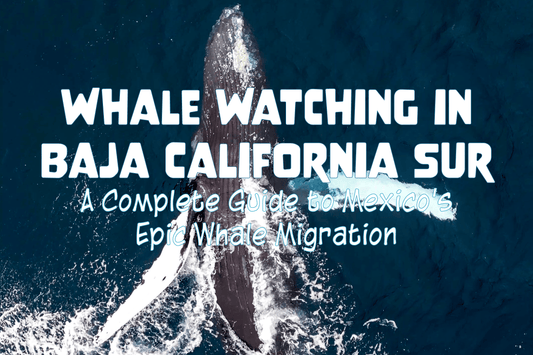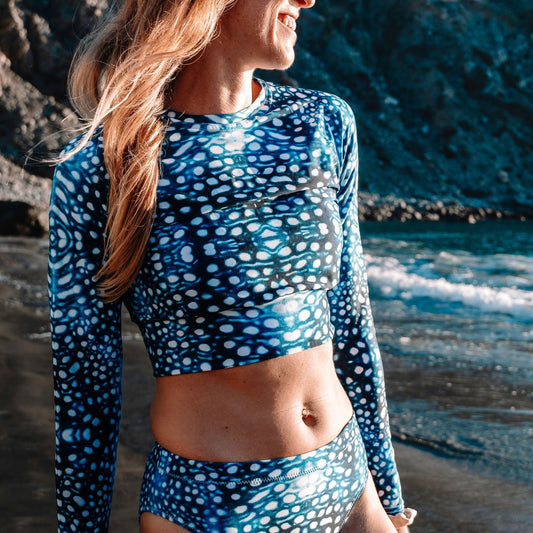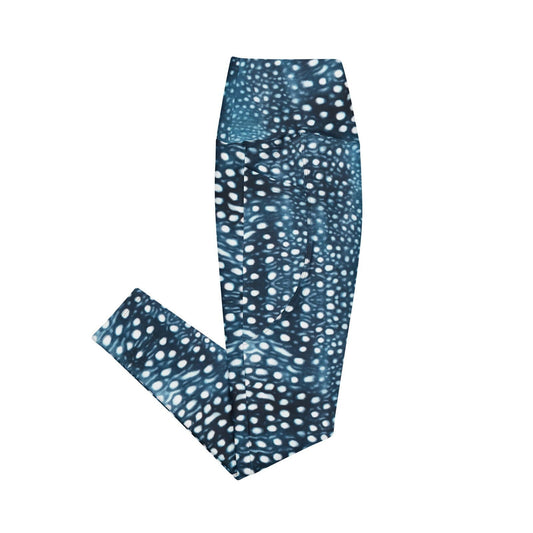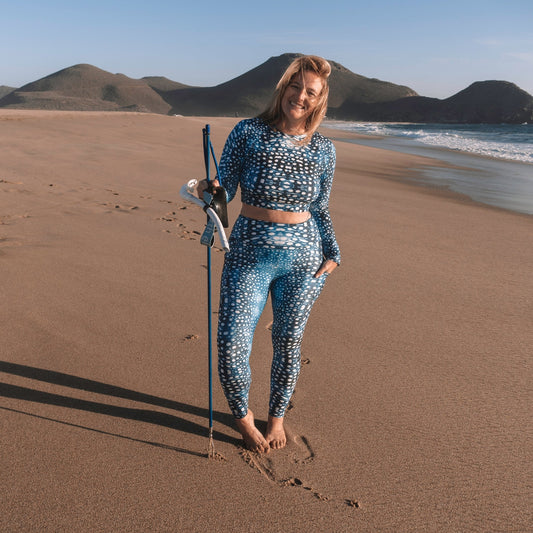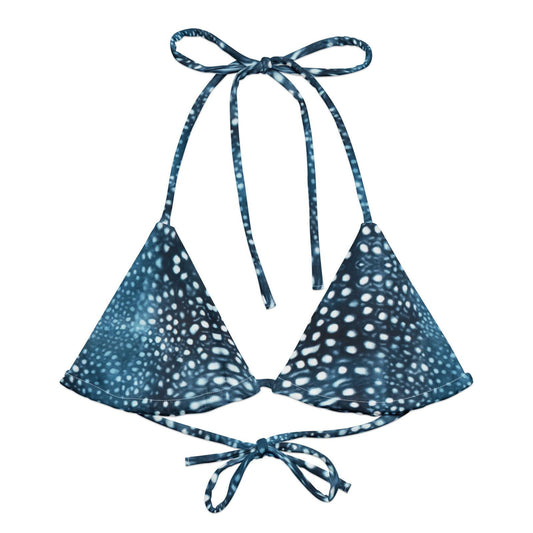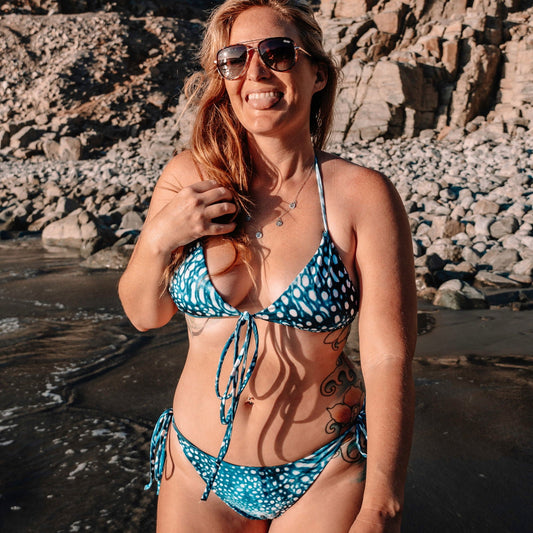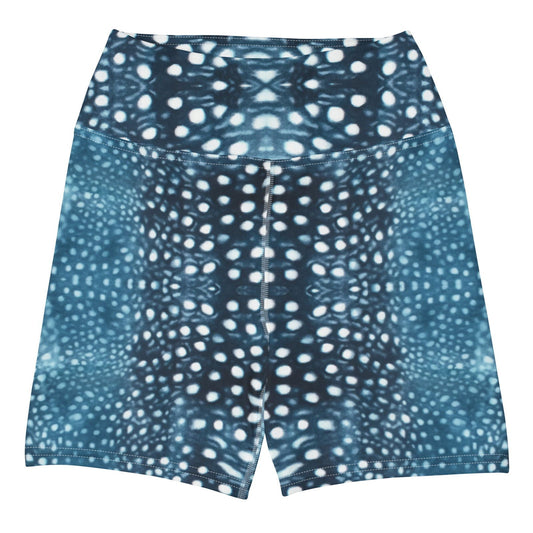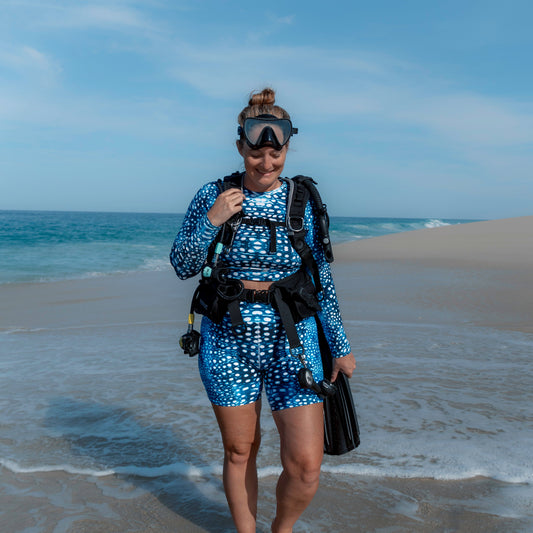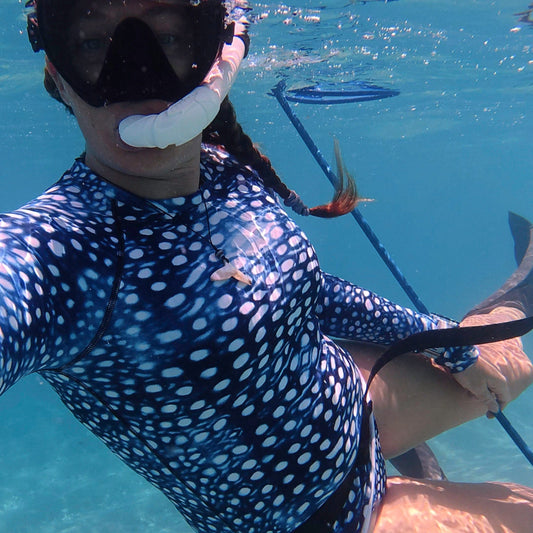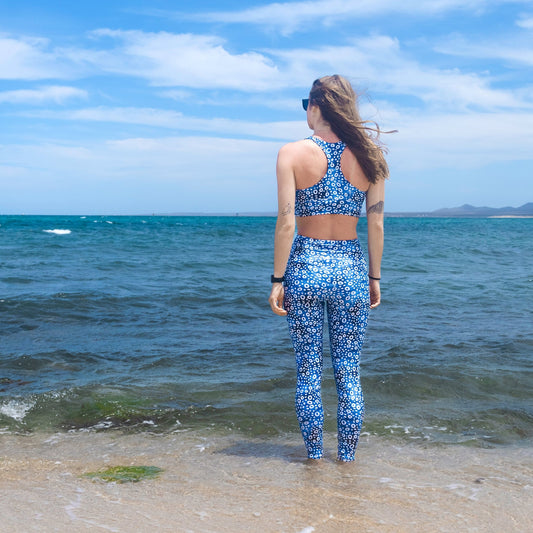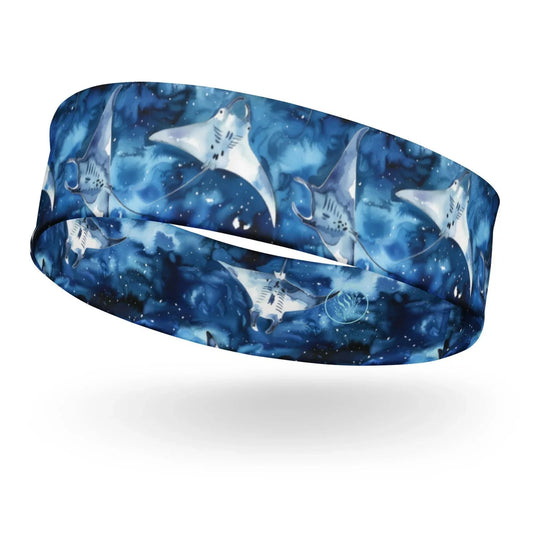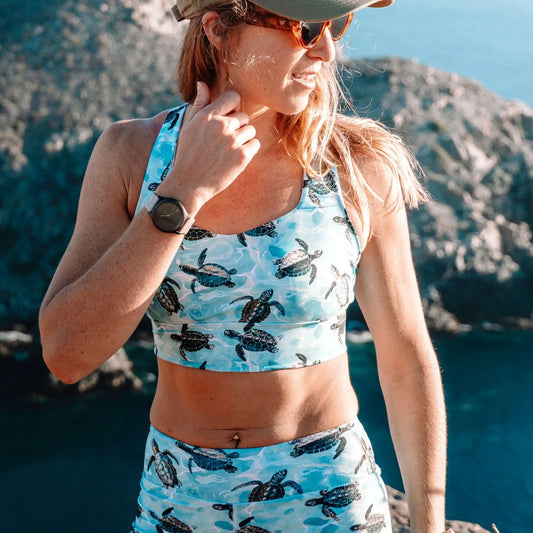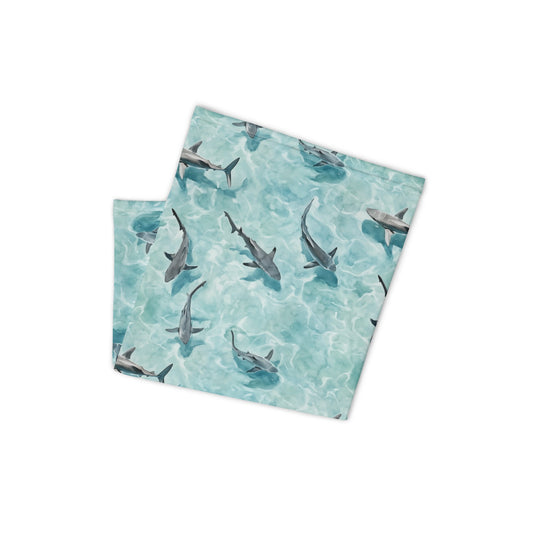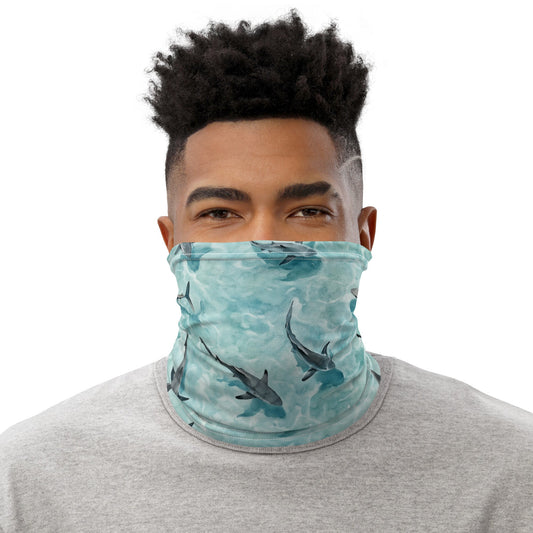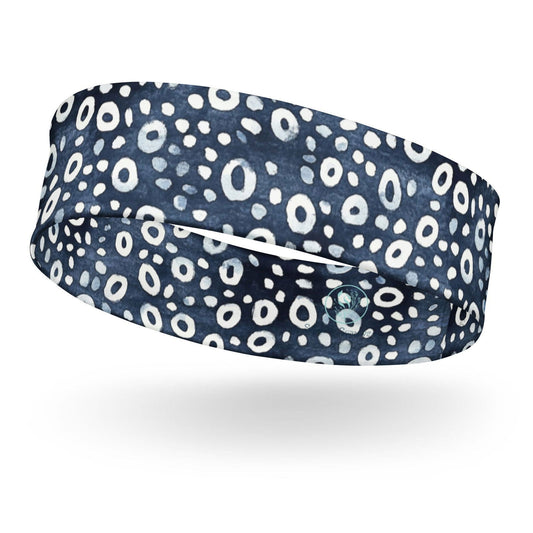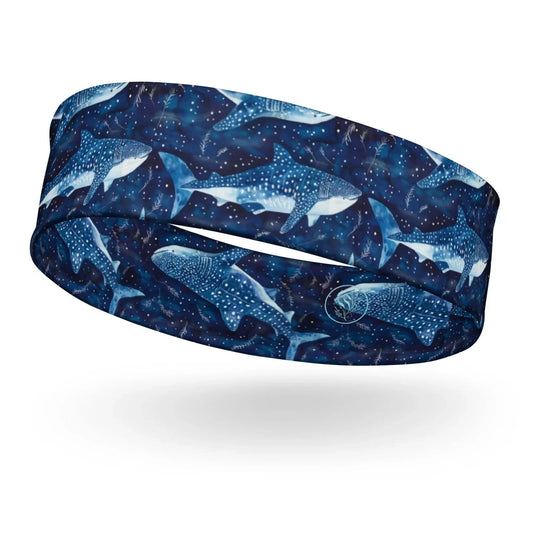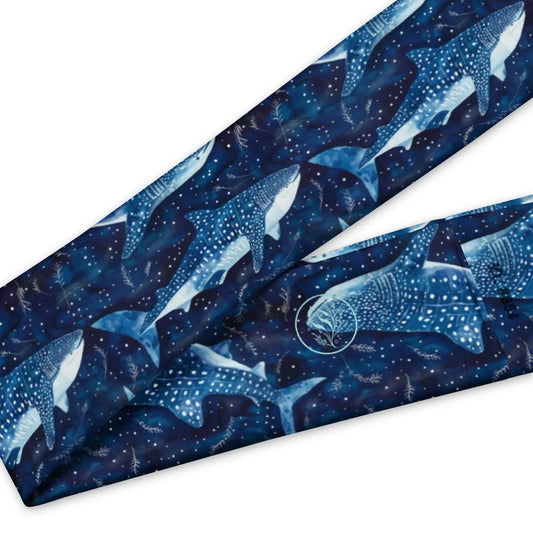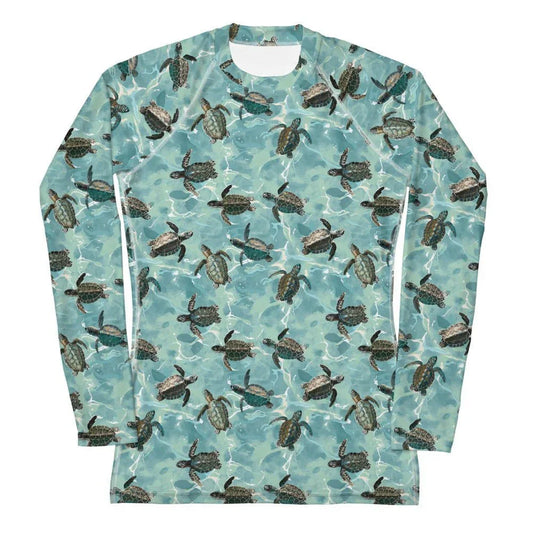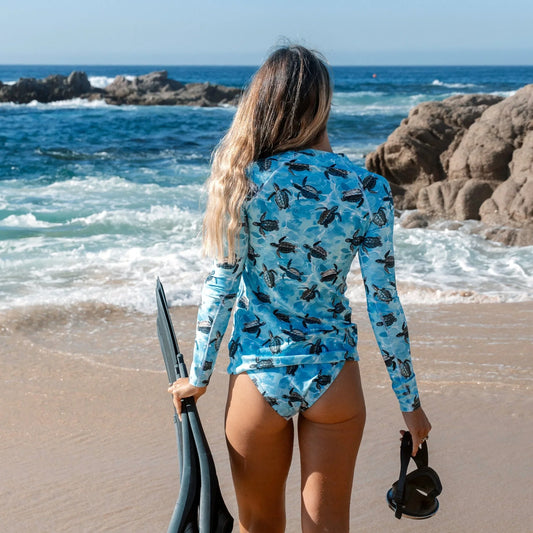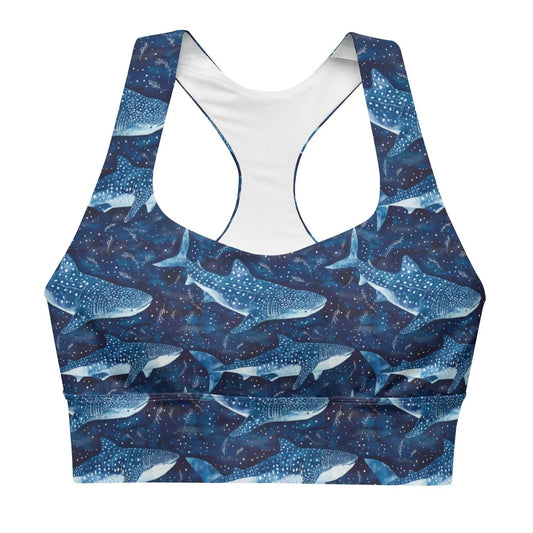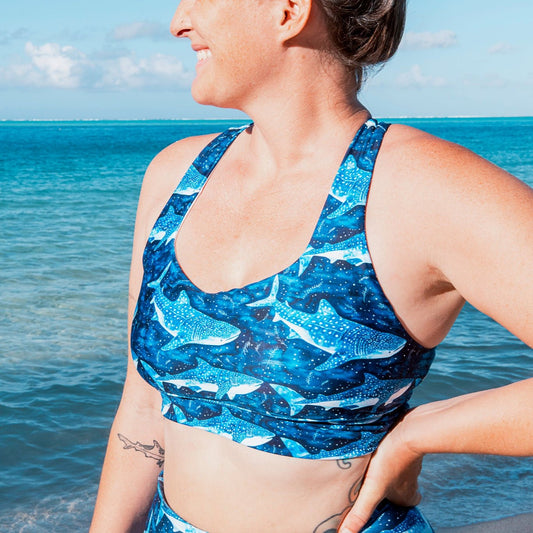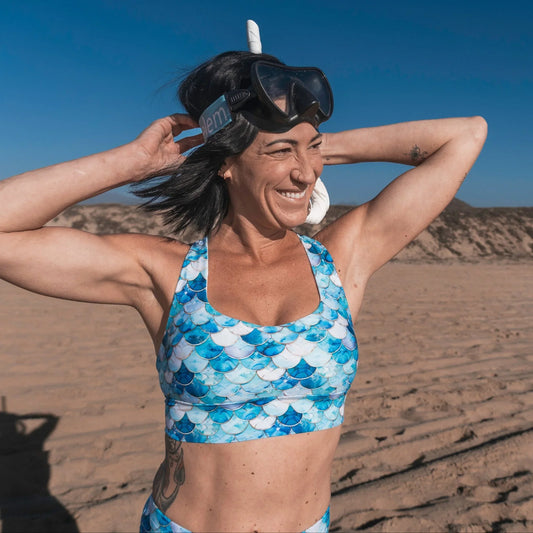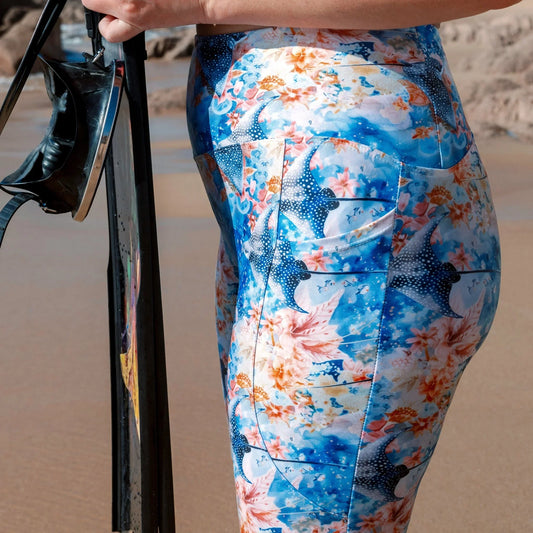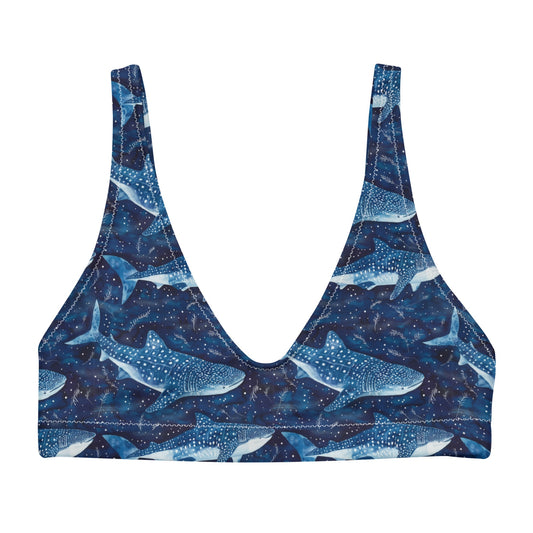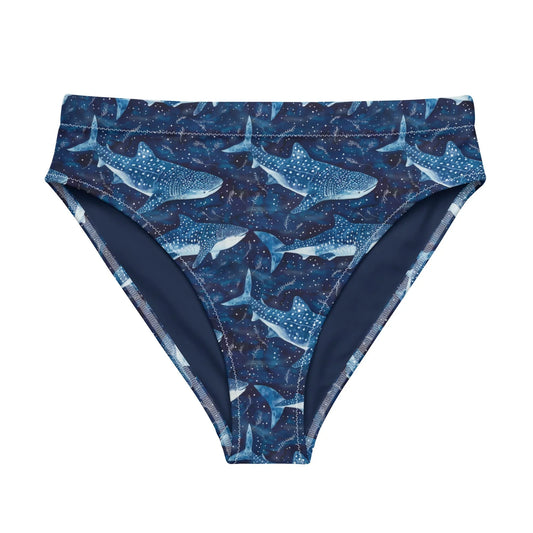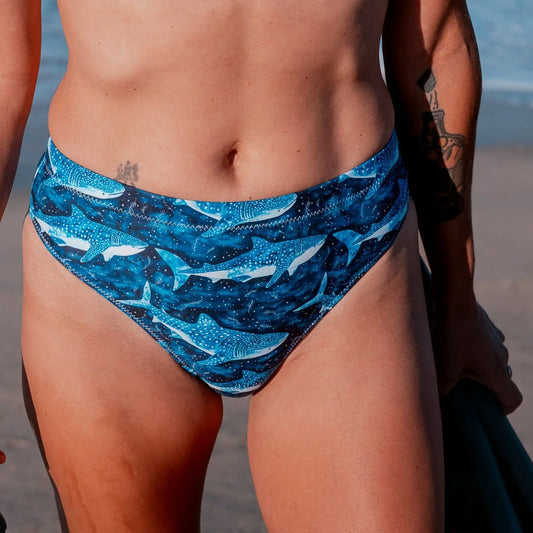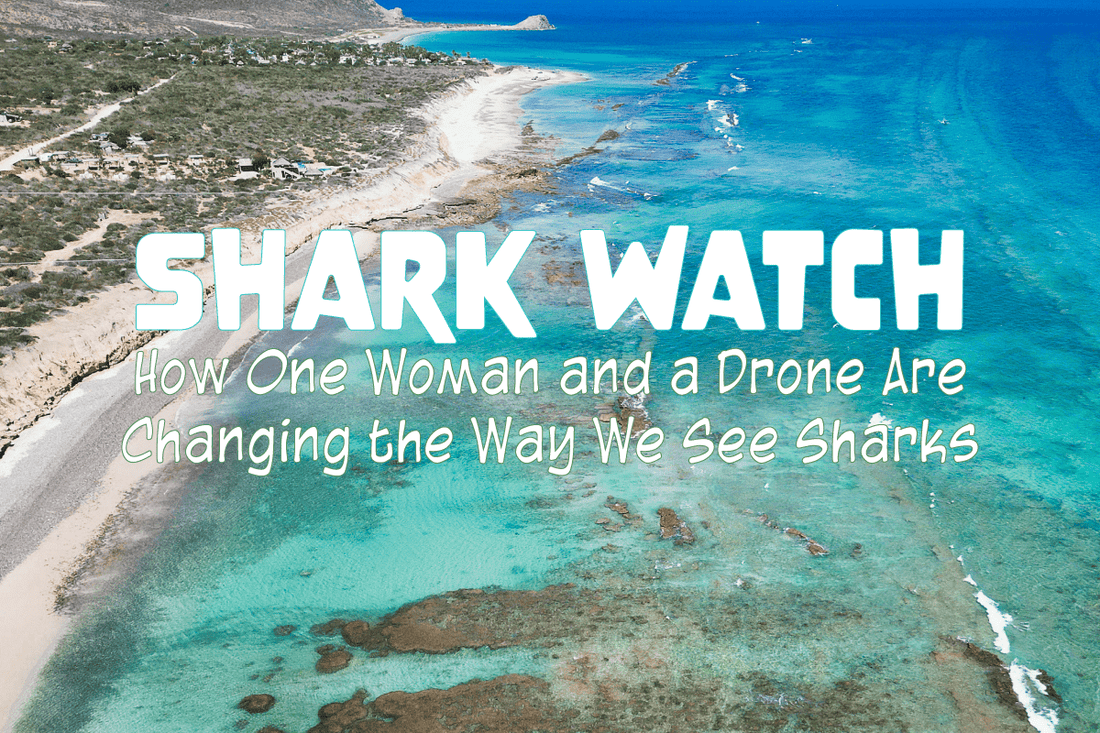
Shark Watch: How One Woman and a Drone Are Changing the Way We See Sharks
Angela ZancanaroShare
Español
Sharks have long been cast as villains in the ocean. Blamed, feared, and misunderstood, these apex predators are often depicted as mindless killing machines. Howevwer that couldn’t be further from the cinematic bloodbath we’ve grown up with. In reality, sharks are critical players in healthy marine ecosystems, many of them are now fighting for survival, and they arent even interested in humans.
Cabo Pulmo National Marine Park a Model Ocean Recovery

At the southern tip of the Baja Peninsula lies Cabo Pulmo National Park—a no-take marine reserve that has become a model of ocean recovery. Once overfished and nearly barren, this stretch of coastline was protected in 1995 after local families banded together to push for conservation. They gave up fishing for many of which was their primary livelihood, and began working in ecotourism instead.
Within just a decade, fish biomass in the park increased by over 463%, and populations of top predators like groupers, jacks, and sharks returned in full force. It's now considered one of the most successful marine reserves on the planet, often cited by scientists as proof that protected areas can reverse damage when enforcement is strong and communities are involved.
Cabo Pulmo's unique geography of shallow sandy beaches, coral reef, and deep offshore drop-offs makes it a hotspot for biodiversity. It also happens to be the perfect place for blacktip sharks to gather each winter, creating a rare opportunity to study their behavior up close using aerial drone surveys.
But even in this conservation success story, there are limits. The park is just 71 km² a small protected area, once the animals leave its borders, they’re vulnerable to fishing pressure. That’s why projects like Shark Watch are so important: they help us understand not just what’s happening inside protected waters, but how far those protections really reach.
A Window into Shark Behavior from the Sky

Shark biologist Katy Ayres came to Mexico in 2018 to begin her PhD with Pelagios Kakunjá. When she first heard about large groups of sharks gathering just off the beach in Cabo Pulmo, she was determined to find a way to study them accurately, and without spending hours with binoculars on a cliff in the sweltering desert heat.
So, armed with a quadcopter and a deep love for sharks, Katy began flying weekly aerial surveys over the park’s shallow sandy coastline. What she captured was nothing short of jaw-dropping: hundreds of blacktip sharks (Carcharhinus limbatus) gathering just meters from shore, forming tight, pulsing schools that moved like liquid shadows.
Using drone footage, her research revealed how blacktips use these nearshore areas for thermoregulation, predator avoidance, and possibly even reproduction. Her long-term study (now in its eighth year of monitoring) has at times recorded over 1,000 individual sharks in a single survey, with abundance closely tied to sea surface temperature and calm, low-wind conditions.
It’s a rare glimpse into shark behavior, gathered in a non-invasive way: no hooks, no tanks, no boats, and no stress for the sharks at all.
*All of Katy's findings are shared with CONANP (Comisión Nacional de Áreas Naturales Protegidas), the national agency responsible for protecting Mexico’s natural areas, which also grants her the permits to collect this vital data.*
But Not Everyone Leaves the Sharks Alone

In an effort to understand the larger migratory behavior of blacktip sharks, Katy was once granted 8 satellite tags to track individuals beyond the protected waters of Cabo Pulmo.
All eight were caught by local fishermen just within months of being tagged.
It was a devastating loss, not only of the sharks but of the scientific data lost of where they go when they leave the shore. While Cabo Pulmo offers a rare refuge, its protections end the moment a shark crosses the park’s invisible border.
Shark fishing is legal in most parts of Mexico, including Baja California Sur, where blacktip sharks are not listed as a protected species. Although certain sharks like great whites, whale sharks, and basking sharks are protected, and there is a seasonal bans from May to July, enforcement is often inconsistent. All of Katy's tagged sharks were caught during the annual seasonal ban that exsists today.
To address these issues, Mexico implemented NOM-029-PESC-2006, a national regulation aimed at sustainable shark and ray fishing. The law prohibits finning, mandates full utilization of landed sharks, restricts gear types in sensitive areas, and designates protected seasons and nursery zones. It’s a strong framework on paper but gaps in law enforcement and reporting allow illegal and unsustainable fishing to persist.
Blacktips are already listed as Vulnerable on the IUCN Red List. The loss of all eight tagged sharks in Katy’s study highlights just how urgent it is to expand protections, improve monitoring, and support sustainable alternatives for fishers.
It’s not just targeted shark fishing that poses a threat bycatch is also a major issue. Blacktips are frequently caught unintentionally in gillnets or longlines set for other species, especially in regions with little regulation or oversight. Even when fishers aren’t aiming for sharks, they’re still pulled from the water, often injured or dead before release if they’re attempted to be released at all.
Why Shark Watch Matters

Shark Watch isn’t just about stunning drone footage or counting sharks, it’s using technology to understand and protect one of the ocean’s most threatened predators. Over time, the project has grown into a bigger collaborative effort with the local community. Katy now works with volunteers from the area, teaching them how to conduct drone surveys and monitor the shark population themselves.
By capturing clear, non-invasive data on when and where blacktip sharks gather, the project provides critical insights into shark behavior and how these animals use nearshore environments throughout the year. This information helps local park managers, marine scientists, and policymakers make more informed decisions about conservation strategies.
If we can figure out where these sharks go next, we might be able to extend protections to those migration routes or seasonal habitats. Every piece of data brings us closer to understanding their full life cycle—not just where they gather, but how to keep them safe year-round, beyond the boundaries of Cabo Pulmo.
How You Can Help
This Shark Week, we’re proud to introduce our new Shark Watch pattern, inspired by Katy’s work and the swirling silhouettes of blacktip sharks off the coast of Baja.
🦈 50% of proceeds from every item sold in this print go directly to support Shark Watch and its ongoing drone monitoring and shark research.
Whether you’re a diver, ocean lover, or just a fan of sharks getting the love they deserve, this is your chance to wear your impact. Shop the collection now.
Shop The Collection
🎥 See It for Yourself
Want to witness what Shark Watch is all about? Check out this incredible drone footage from Katy’s research, capturing blacktip sharks schooling just off the beach in Cabo Pulmo and follow along on Instagram for updates and videos: @sharkwatchbaja





